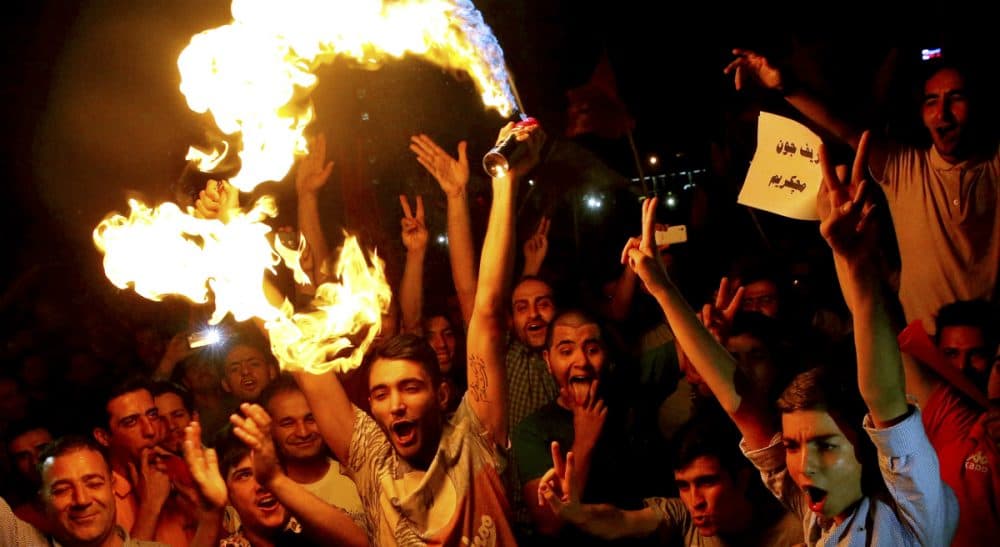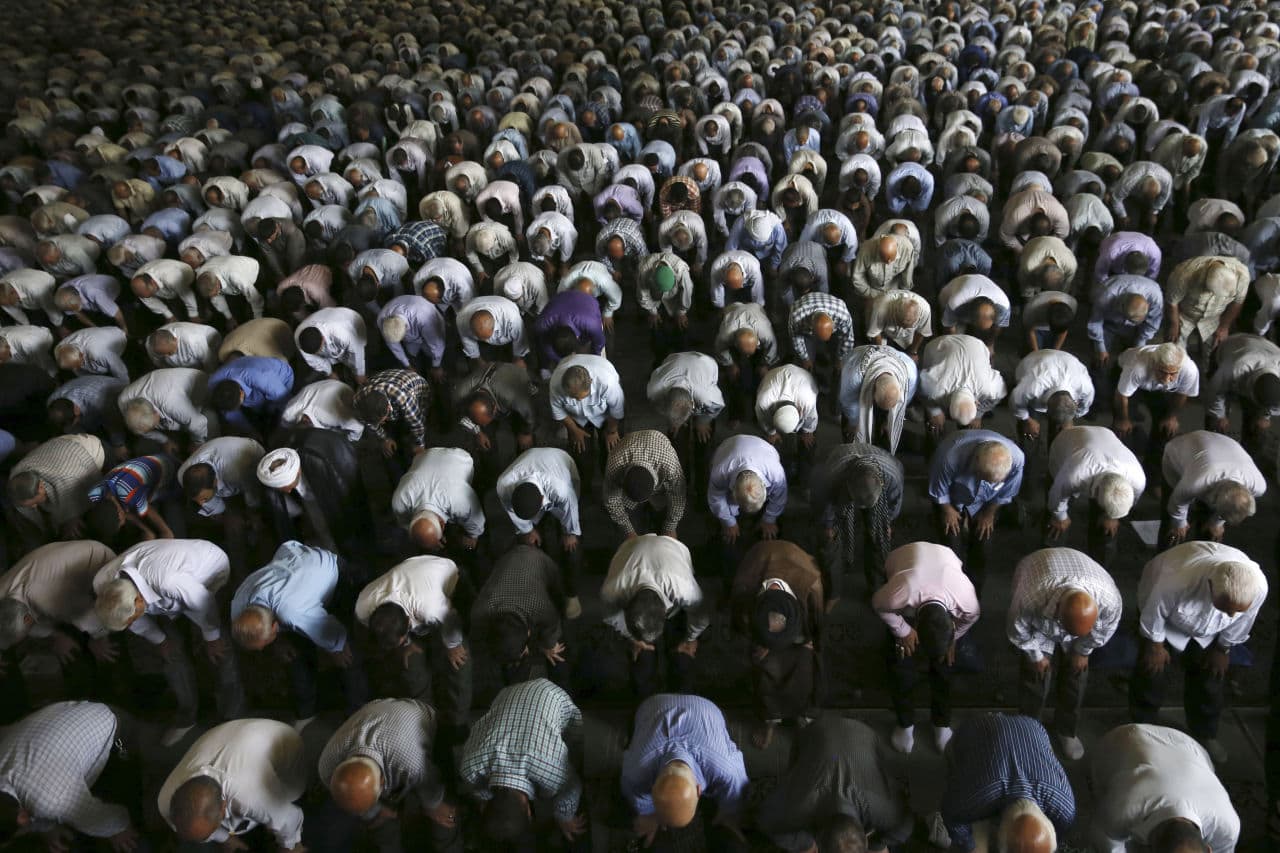Advertisement
Cautious Optimism: An Insider Sizes Up The Iran Nuclear Deal

The new Iran agreement is more than 150 pages long. And believe me, it is not an easy read, even for experts.
On the one hand, that’s good news. It demonstrates a care and attention to detail — something you want in a nuclear agreement. By any standard, this is one of the most detailed nonproliferation or arms control agreements ever negotiated. President George W. Bush’s Moscow Treaty with Putin was a mere two pages long.
The downside to such detail is that very few people are going to read the whole thing. They will necessarily have to rely on others to tell them the contents. This opens the door to misunderstanding, if not political mischief.
...this is one of the most detailed nonproliferation or arms control agreements ever negotiated. President George W. Bush’s Moscow Treaty with Putin was a mere two pages long.
So, what is one to do?
I had a chance to think about this when the Senate Foreign Relations Committee asked me to testify about a possible Iran agreement, and the criteria one should use to evaluate it. This, in abridged form, is what I said:
How does one do assessment?
Assessment is more than simply listing the things that could go wrong or right with an agreement. In theory, lots of things can happen, but in practice, few of those possibilities come true. Experience and data enable analysts to distinguish between what is more likely and what is unlikely.
What does the track record say?
Over the 70 years of the nuclear age, the U.S. has had a lot of experience with nonproliferation and arms control agreements, and the results are rather surprising. As contemporary scholars of nuclear studies have repeatedly pointed out, the historical record for non-proliferation is an astonishing story of success. Dark predictions of nuclear spread did not come true. In fact, the rate of proliferation has steadily declined since the 1960s, with fewer and fewer countries joining the nuclear weapons club each decade. (N.B.: Some 30 countries started down the path to nuclear weapons and reversed course. In some cases, the pursuit was exploratory; in other cases, it involved full-blown weapons programs. Countries that considered nuclear weapons acquisition include Taiwan, South Korea, Egypt, Libya, Iraq, Iran, Germany, Italy, Japan, Yugoslavia, Romania, Brazil, Argentina, Sweden, Switzerland, Australia, Canada, Indonesia and Spain, among others.)
Of course, not all the news is good (see: North Korea), but the unambiguous evidence to date suggests that it is possible to prevent and even reverse proliferation, and that negotiated agreements are a powerful tool for achieving nonproliferation objectives. (Contrary to popular understanding, the rate of proliferation peaked in the 1960s and has declined in every ensuing decade.)
Advertisement
For one thing, verification has grown progressively stronger over time. This is true legally, as the mandate for international safeguards and inspections has become more intrusive. It would have been inconceivable to someone at the International Atomic Energy Agency (IAEA) in 1970, for example, that an inspector could go to military sites. Progress has also been made operationally. The science and technologies available for verification today are more powerful than ever.
Is the current context conducive to success?
According to U.S. intelligence assessments, Iran currently has no active, structured nuclear weapons program (it ended it in 2003); has not made the decision to build nuclear weapons; and operates no clandestine nuclear facilities. It will now open itself to the most intrusive multilateral verification arrangement ever negotiated. Those are favorable conditions for a verification regime.
Verification will be enhanced by the fact that Iran is probably the most watched country in the world -- a fact unlikely to change any time soon. The U.S., Russia, France, Britain, Germany, Israel, Saudi Arabia (and the other Gulf states) all have their eyes on Iran. Many, including Iranian opposition groups, will be looking under every haystack and in every corner for the first signs of noncompliance.

4 Questions For Assessing The New Agreement
Given the track record and the current conditions, how should one assess the quality of this agreement? It will be easy to get lost in the details or to fixate on one aspect. Those challenges will be made worse by the outlandish claims already being made by political partisans. My advice is to step back from the circus and focus broadly on four essential points:
1. Does an agreement substantially advance the objective of preventing Iran from acquiring a nuclear weapon?
This is the most important criterion. It is a nuclear agreement. It is not a terrorism, human rights or conventional weapons agreement. And there is a clear reason for that: Preventing Iran from acquiring nuclear weapons is the top priority. Period. Other concerns are important, but Soviet Gulags and Gaddafi-funded terrorism did not prevent past presidents from negotiating nuclear agreements.
2. How does the agreement compare with other successful (and unsuccessful) nuclear agreements?
Are its provisions stronger or weaker than previous agreements? What provisions does an agreement have that are different from previous agreements? Are there elements of past agreements that are missing from this agreement?
3. How does an agreement compare to the other alternatives for dealing with Iran’s nuclear program?
The basic alternatives include imposing new sanctions, use of military force and walking away from the agreement with the hope that Iran will return to the bargaining table to make new concessions. Analysts will debate the merits of these alternatives, but the point is that no agreement can be evaluated by itself, without reference to the costs and benefits of the other courses of action.
4. Using simple, broad measures, how does an agreement compare to the status quo?
One quick and dirty way to get a general picture of an agreement is to ask how an agreement compares with the period before the agreement. A simple one is the number of IAEA inspectors deployed to Iran. After the interim agreement that has been in place for the last year and a half, the IAEA said it would have to double the number of inspectors in Iran. A new comprehensive agreement could require that IAEA again increase the number of inspectors to support an enhanced level of verification. Another metric is transparency. Does the agreement expand the number of sites and activities subject to inspection, the amount of data being gathered for verification, the kinds of data being collected for verification, and so on?
Last advice: Avoid making perfect the enemy of the good.
There is no such thing as a perfect agreement, free of risk. In public policy, there are always risks — risks from action, risks from inaction. But as history has repeatedly demonstrated, an agreement that greatly advances nonproliferation and U.S. national security does not have to be perfect. If perfect were the standard, we would have no Nuclear Nonproliferation Treaty, no arms control agreements with the Soviet Union, no nuclear deal with Libya, no Proliferation Security Initiative and the like, each of which greatly advanced American national security.
